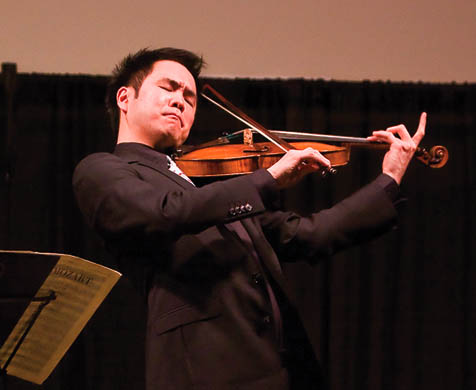Camerata Pacifica
At El Montecito Presbyterian Church Fellowship Hall, Friday, December 7.

The holidays are a great time to revisit the music of Mozart, and Camerata Pacifica took a distinctly adventurous path in this all-Mozart program, yet never strayed far from the sound of the viola. First up was the Duo No. 1 in G Major for Violin and Viola, K. 423, played by Catherine Leonard and Richard O’Neill. The playing was spirited and flawless, with O’Neill in particular arousing awe with his lush yet brilliant tone and his command of the instrument’s dynamic range. It is a rare treat to hear two musicians of this caliber addressing a string duo with such enthusiasm and conviction.
The stage was set for two major pieces each emphasizing the extraordinary beauty and emotional depth of Mozart’s writing for strings-especially violas. For the Quintet in G Minor for Two Violins, Two Violas, and Cello, K. 516, O’Neill and Leonard were joined by Stefan Milenkovich on violin, Toby Appel on viola, and Ani Aznavoorian on cello. As with all the music heard during this evening, it would be easy to shower superlatives upon this truly outstanding work. Full of heartbreak and yearning, the piece explores the outer limits of Mozart’s emotional range, ending in an unexpectedly bright Adagio-Allegro. This is 36 minutes of the most ravishing music ever composed, and the group played it magnificently.
After the interval, and the addition of Lar Hoefs on a second cello, the group attacked the Grande Sestetto Concertante, After K. 364. This is an anonymous chamber transcription of a larger work that Mozart wrote while under the influence not only of the Baroque concerto grosso tradition, but also of his travels, particularly to Paris. It is likely that Mozart himself played the wonderful viola solo, and the work overflows with genius throughout. A double concerto in form, it allows for the instruments to trade the lead in round after round of fleet interplay. The opening Allegro maestoso carries things immediately to the absolute heights of thematic and melodic invention. What follows is magical, a whirlwind of duets and harmonies, all seeming to rise and fall as naturally as breathing. The effect of the entire evening was to reawaken the deepest respect for the sophistication and range of Mozart’s writing, which truly contains worlds.



